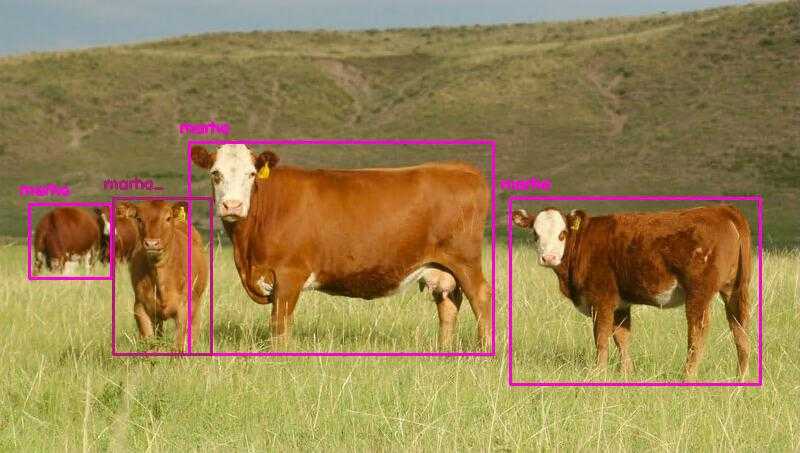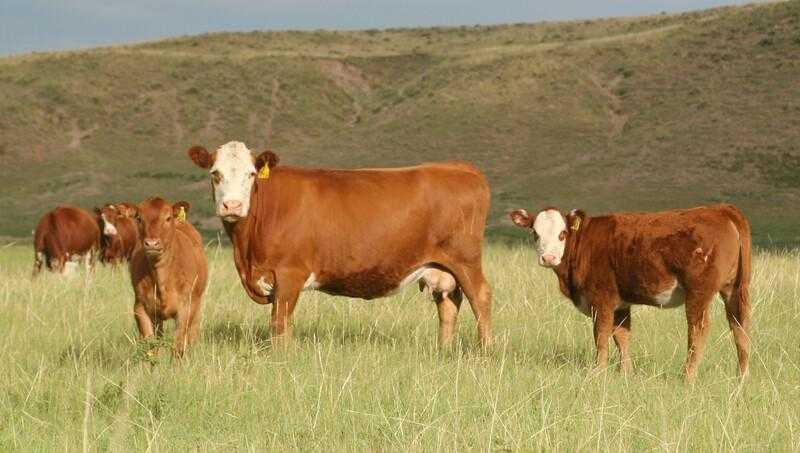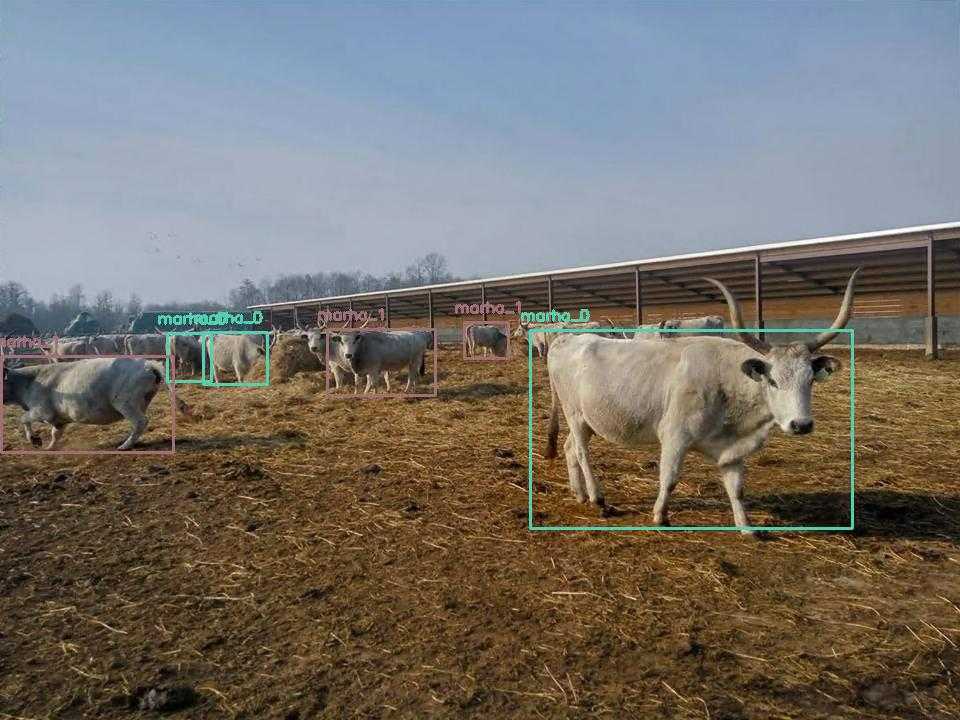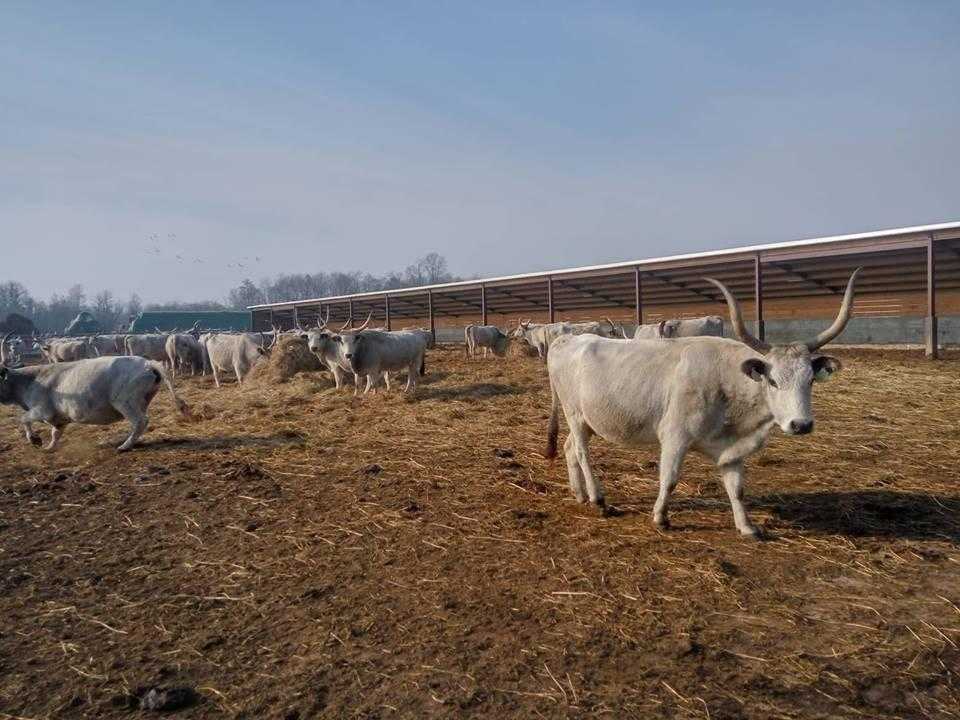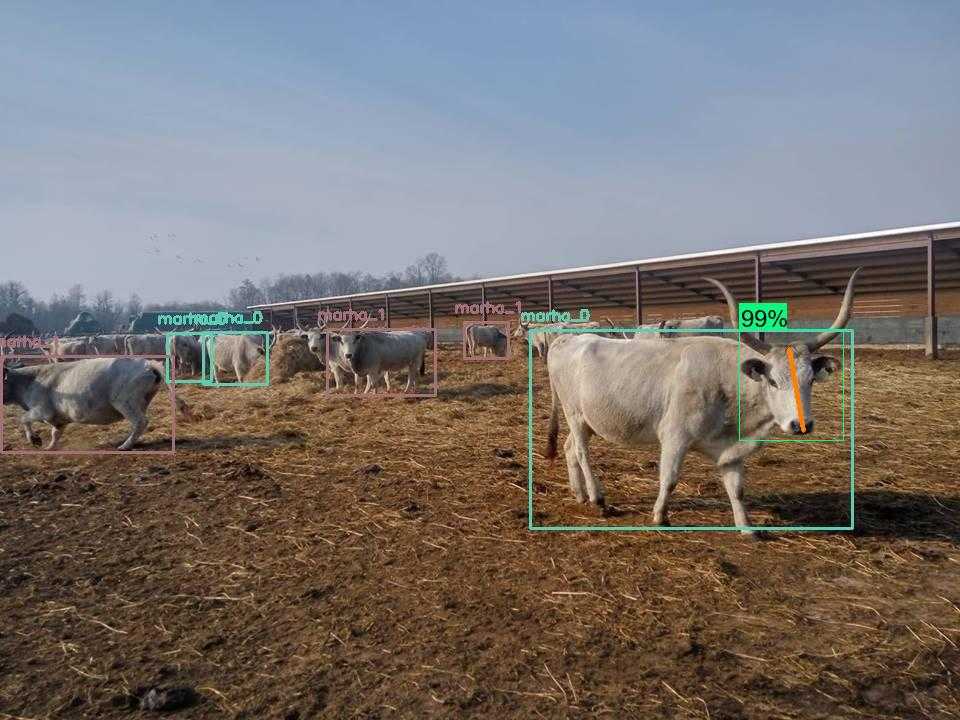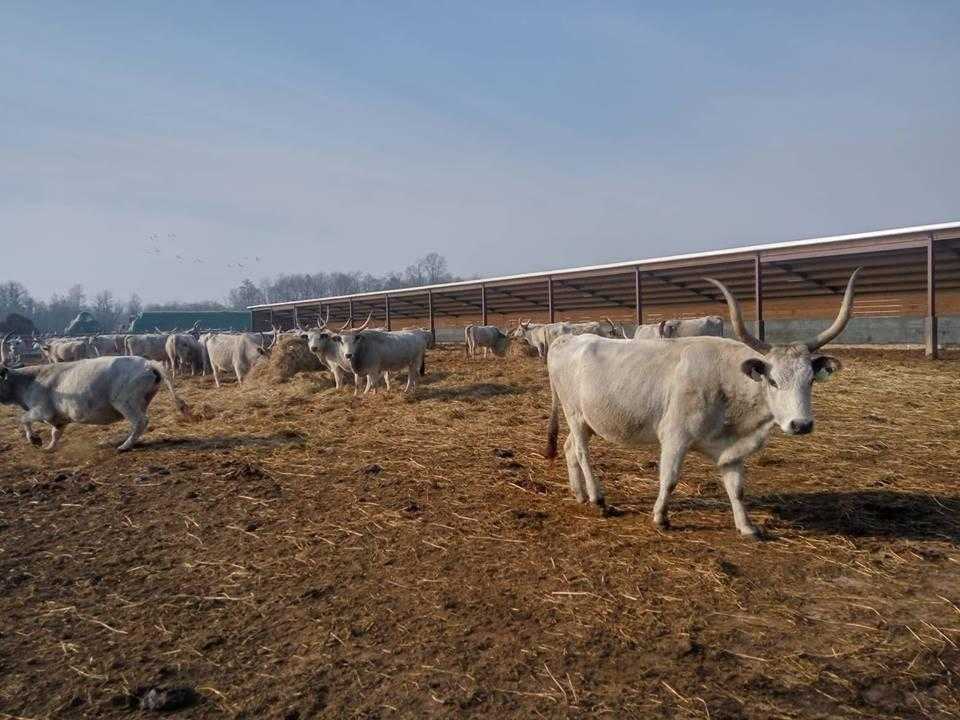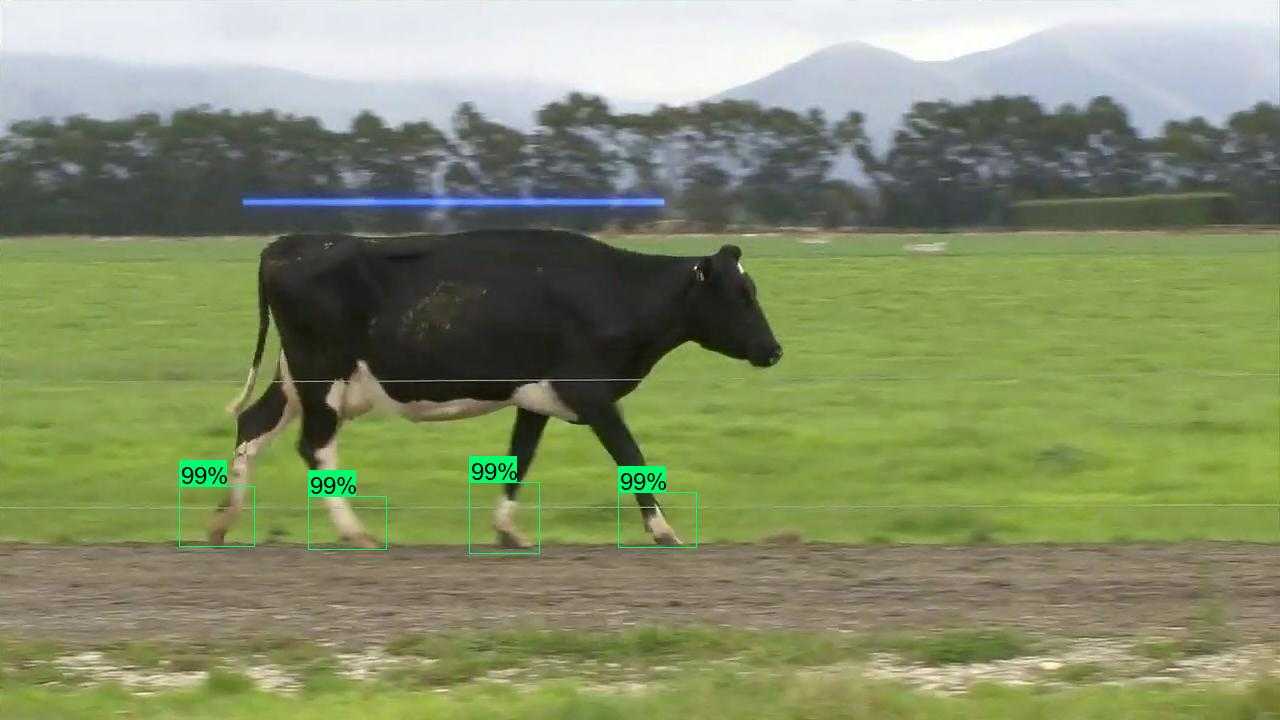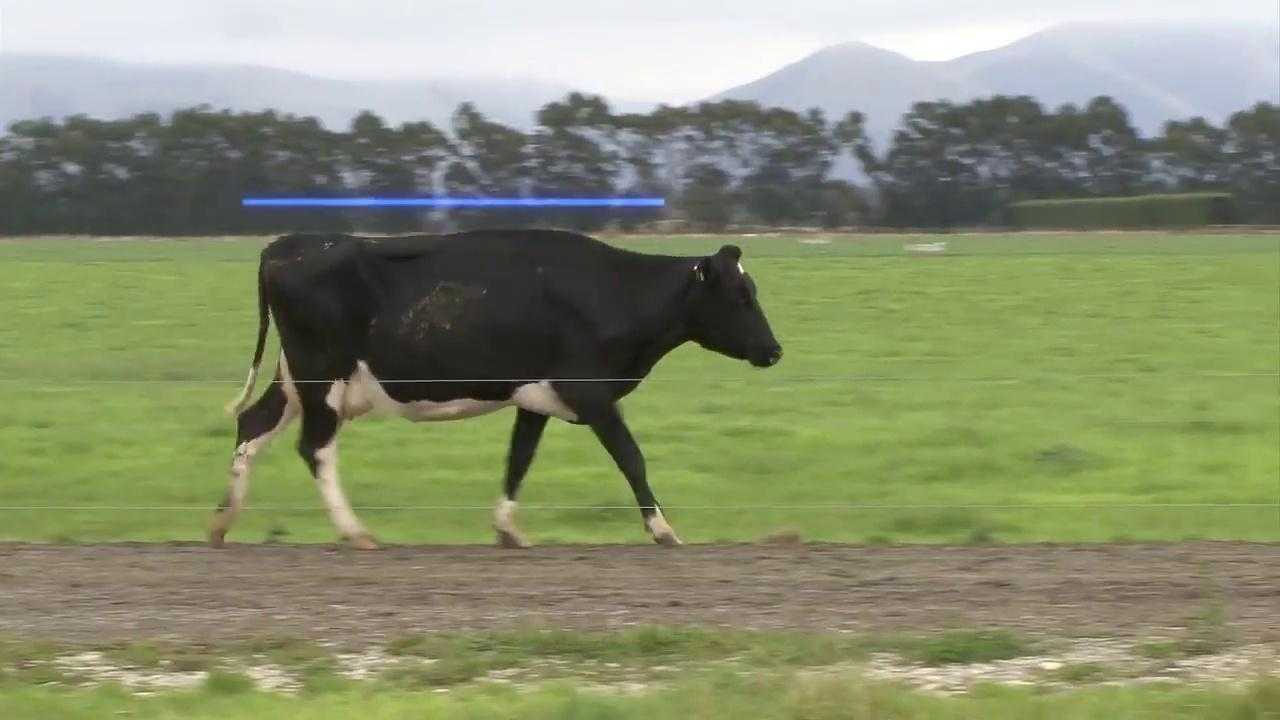Machine Learning in Livestock Production
Computer vision can also monitor the movement of animals and even detect certain diseases early on.
Cattle Counting and Monitoring
- Base model: yolo_v5
- Input: 600×450
- Output: Position and recognition percentage of cattle
The object detection model was re-trained with 2055 cattle images (COCO dataset). The test data achieved an accuracy of 85%.
The model is fast and relatively accurate, providing the perfect solution for real-time video analysis. The model can be used to isolate and count animals.
Head position
- Base model: faster_rcnn_inception_v2 (pets)
- Input: 600×450
- Output: cattle head’s position and recognition percentage
The object detection model was re-trained with approx. 1000 cattle(head) images. The test data achieved 95% accuracy after 15,661 epochs (teaching repetition count).
The model accurately recognizes and determines the position of the cattle head. The posture and swinging of the head indicate the animal's health.
Leg position, gait monitoring
- Base model: faster_rcnn_inception_v2 (pets)
- Input: 600×450
- Output: foot position, recognition percentage
The object detection model was re-trained with approx. 700 cattle(feet) images. The test data achieved 90% accuracy after 8745 epochs (training repetition count).
The model recognizes and determines the position of the cattle feet. The rhythm, speed and distance of feet can indicate the animal's state of health. Unlike lame cattle, the hind legs of a healthy animal step into the footprints of its first legs. The gait is analyzed by machine vision, the position of the hooves are recorded, and machine learning is used to examine and classify them.
